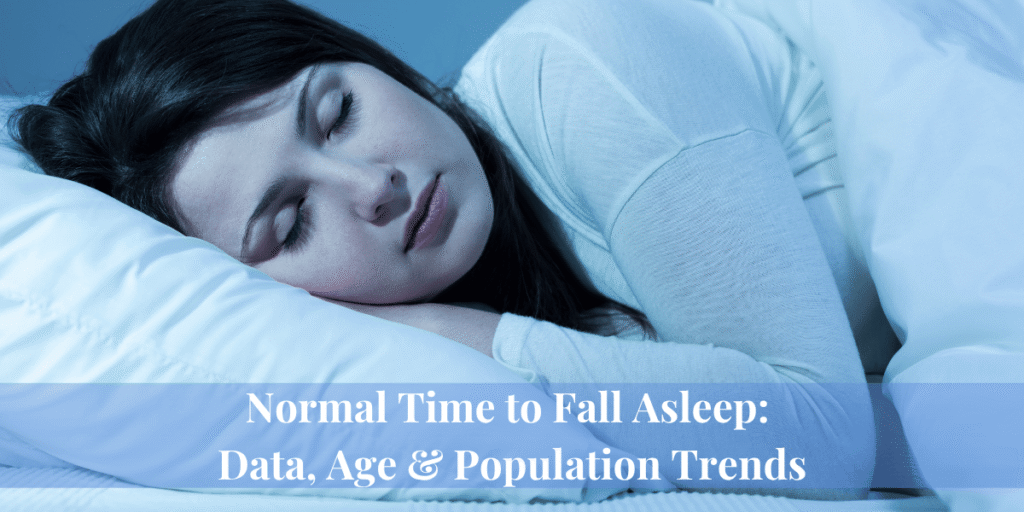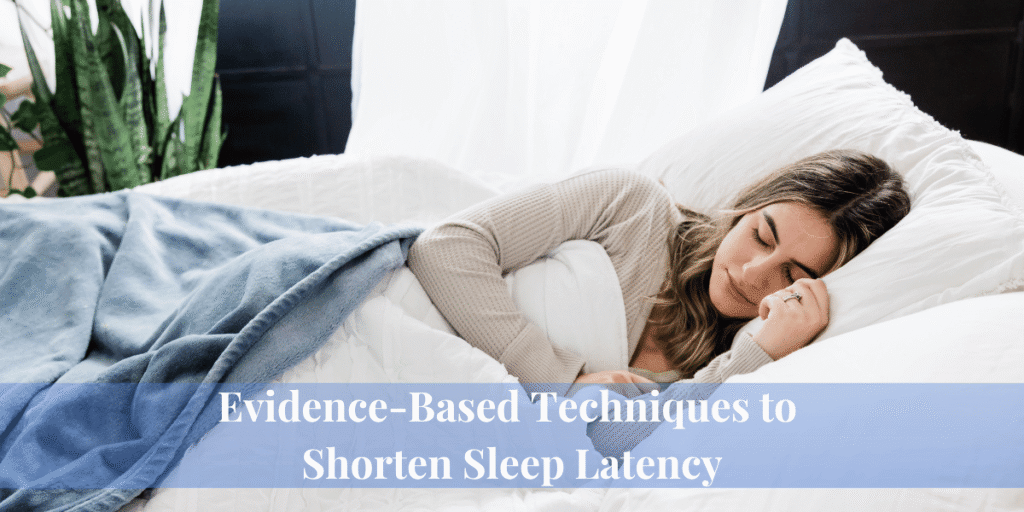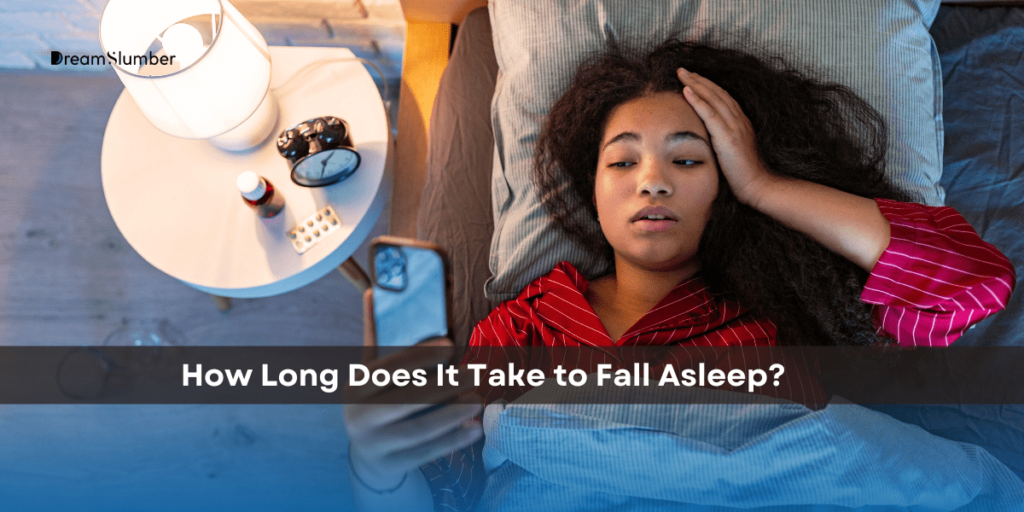When you purchase through our links, we may earn a commission at no extra cost to you. As an Amazon Associate, DreamSlumber earns from qualifying purchases. Learn more.
You lie in bed, eyes closed, waiting… but sleep seems elusive. How long does it take to fall asleep? For many people, that stretch between turning off the lights and drifting into slumber feels endless. Yet that span, known in sleep science as sleep latency or sleep onset latency, carries important clues about your sleep health, daytime energy, and even long-term well-being.
In this article, we’ll cut through the noise and answer: How long does it take to fall asleep normally? We’ll examine what counts as “fast” or “slow,” explore the biological, lifestyle, and medical factors at play, and introduce proven strategies backed by research to help you shorten your transition to rest. You’ll also find real-world stories, data from large-scale studies, a comparison table of techniques, and a practical week-by-week plan. Whether you struggle with insomnia or simply want to improve your nightly reset, you’ll come away with clarity and actionable steps.
What Is Sleep Latency (Sleep Onset) and Why Does It Matter
“Sleep latency” (sometimes called “sleep onset latency” or SOL) refers to the duration from the moment you intend to sleep (typically when lights are off or you lie down) to the moment your brain and body cross the threshold into actual sleep. In simpler terms, it’s how many minutes it takes you to fall asleep.
Why does this matter? Sleep latency is one of the core metrics in sleep science; it reflects:
- Sleep pressure/sleepiness: If your brain is ready for rest, latency tends to be shorter.
- Sleep quality & efficiency: Longer latency reduces total usable sleep time. If partner movement wakes you just as you’re drifting off, consider beds that limit motion transfer. Here are the top picks for shared sleepers: best options for couples.
- Sleep disorders: Chronic delays in latency may signal insomnia, circadian misalignment, or other underlying issues.
- Health outcomes: Emerging research links habitual prolonged latency with higher risks for certain diseases and even mortality (discussed later). For individuals who experience tingling legs or poor circulation as they fall asleep, these tips on the most circulation-friendly sleep positions can help reduce discomfort at lights-out.
By monitoring latency over time (e.g., via sleep apps or diaries), you can detect patterns, evaluate interventions, and track improvement.

Normal Time to Fall Asleep: Data, Age & Population Trends
You might often see “10–20 minutes” cited as the ideal range. That figure is broadly supported, but there’s nuance behind it.
Meta-analysis and normative data
A modern meta-analysis covering 110 cohorts (totaling over 4,000 healthy adults) found a mean sleep latency of 11.7 minutes (using earlier definitions of sleep onset) and 11.8 minutes (using more recent definitions). This suggests that under ideal conditions, many adults fall asleep in around 10–12 minutes.
Another way to view this is via multiple sleep latency tests (MSLT) used in research settings, where average latencies tend to cluster around 10 minutes in non-sleep-disordered participants.
However, clinical definitions often allow up to 20–30 minutes of latency as within normal range, especially under non-ideal conditions. For example, the Sleep Foundation notes that up to 20 minutes is typical for many people. Many practitioner guidelines take 30 minutes as a threshold beyond which intervention might be considered.
Latency by age group
Latency tends to vary with age. Below is a rough comparative table:
| Age Group | Typical Latency Range* | Notes / Caveats |
| Young children (5–12) | 5–15 min | More resilient circadian pressure |
| Adolescents / Teens | 10–20 min | Often delayed by social habits |
| Healthy Adults (20–60) | 10–20 (some up to 25–30) | Baseline reference |
| Older adults / Seniors | 15–30 min | Very elderly/frail |
| Very elderly / frail | 20–45 min | More variability, comorbidities |
*Ranges are approximate and depend on study methods, sleep debt, and individual differences.
Occasional deviations, falling asleep faster (e.g., <5 min) or slower (30+ min), are normal under many life stressors. But when deviations become consistent, they may signal underlying issues.
Why Some People Take Longer or Shorter to Fall Asleep
There’s rarely a single cause behind slow sleep onset. Here are key factors that influence your latency:
Major Factors Affecting Sleep Onset
- Sleep debt/prior wakefulness
Sleeping less than your body needs increases “sleep pressure,” which usually shortens latency. Conversely, going to bed before you’re sufficiently tired can elongate latency. - Circadian timing/chronotype
If your natural internal clock (chronotype) signals sleep later (night owl), but you go to bed earlier, you may struggle to fall asleep. In other words, a misaligned circadian rhythm can delay the onset. - Stress, anxiety & cognitive arousal
Racing thoughts, worry, anticipation, or mental stress raise cortisol and sympathetic activation, which inhibit transition to sleep. Many people experience latency spikes during high-stress periods (exams, deadlines, life events). - Stimulants & substances (caffeine, nicotine, medications)
Caffeine consumed late in the day can delay sleep by 40+ minutes in some individuals (depending on metabolism). Research shows evening intake not only prolongs sleep onset but also alters sleep stages, helping set a practical cut-off window (peer-reviewed trial in SLEEP). Other medications (e.g., stimulants, some SSRIs) or substances (nicotine, certain cold medicines) also interfere. - Light exposure & electronic screens
Blue light suppresses melatonin and signals wakefulness to the brain, delaying the comfortable window for sleep. The CDC highlights that short-wavelength light strongly shifts circadian rhythms, making screen dimming crucial before bed (CDC resource). - Bedroom environment & comfort
Temperature, noise, light leaks, poor mattress or pillow, plus the overall feel you prefer. If you’re deciding between softer contouring and a cushier top layer, this guide to plush vs. pillow-top comfort can help. - Medical conditions & sleep disorders
Conditions such as insomnia (onset type), restless legs syndrome, sleep apnea (if waking up frequently), chronic pain, or psychiatric conditions may prolong the onset. - Medication effects & comorbidities
Some medications (beta-blockers, stimulants, steroids) and other health issues (thyroid problems, chronic inflammation) may shift latency.
Biological & Chronotype Differences
Those with different chronotypes (owls vs larks) have varying sleep onset windows. A “night owl” may find 10 pm bedtime too early, causing prolonged latency. Hormonal shifts (e.g., puberty, menopause) and age-related changes to circadian rhythms also interact.
Medical & Disorder Effects
For example, individuals with delayed sleep-wake phase disorder habitually cannot fall asleep until late, even though they desire earlier sleep. Insomnia disorder (onset type) is diagnosed partly when latency exceeds 30 minutes on more nights than not, despite adequate opportunity.
Health Implications of Abnormal Sleep Latency
Sleep latency is not just a nuisance metric; it relates to broader health.
- A prospective cohort study found that individuals with chronically prolonged sleep latency (habitually long onset times) had an independent association with increased all-cause mortality and cancer-specific mortality, even after adjusting for other factors.
- Frequent, prolonged latency is associated with lower self-rated health, increased stress, and a worse mood in observational samples.
- Because long latency often reduces overall sleep cycles or causes fragmentation, it can lead to lower sleep efficiency, poor restorative sleep, and daytime impairment.
Thus, while an occasional slow night is benign, a consistent upward trend in latency merits evaluation.
Methods to Measure Sleep Latency (At Home & Clinically)
Understanding how latency is measured clarifies what your “minutes to fall asleep” may mean.
Home / Personal Methods
- Sleep diary / log: Note the time lights-off and the estimated time asleep; average across nights.
- Sleep tracker / smartwatch / smartphone apps: Many estimate latency using motion + heart rate data (though accuracy is variable).
Clinical / Lab Methods
- Polysomnography (overnight sleep study): Measures latency via EEG, from lights-off to the first epoch of non-wake brain waves.
- Multiple Sleep Latency Test (MSLT): Subjects take short naps spaced over the day to assess mean latency, a test used for diagnosing hypersomnia/narcolepsy.
- Maintenance of Wakefulness Test (MWT): Opposite: how long one can stay awake; used for some sleep disorder assessments.
Clinically, latency measured by EEG is more precise; home track is approximate but useful for trends.

Evidence-Based Techniques to Shorten Sleep Latency
This is the “how-to” heart of the article. Below is a breakdown of well-supported techniques, along with a comparative table.
Techniques (with explanation first)
Before presenting the list, note: consistency matters more than perfection. Try one or two techniques for at least 2–4 weeks and monitor changes.
- 4-7-8 Breathing / Box Breathing
These controlled breathing techniques help slow the heart rate and engage the parasympathetic system. Some users report falling asleep in minutes.
How to do it: Inhale 4s, hold 7s, exhale 8s (repeat). Or box breathing: 4-4-4-4.
Evidence: lower arousal, better transition to sleep states. - Progressive Muscle Relaxation (PMR)
Tense and relax muscle groups from toes upward (or reverse), focusing on the release. Helps overcome residual physical tension. - Guided Sleep Meditation / Visualization
Audio tracks or guided scripts help redirect thought from worry to calming imagery or breathing, reducing cognitive arousal. - Military Method
A stepwise relaxation technique (face, shoulders, arms, chest, legs) plus clearing your mind or using visual imagery. Over time, many users report falling asleep within 2 minutes or less with practice. - Stimulus Control / Cognitive Restriction
Techniques from CBT-I: only go to bed when sleepy; if you don’t fall asleep in ~15–20 minutes, get up and do a relaxing activity (in low light), then return when drowsy. This strengthens bed–sleep association. - Sleep Hygiene & Environment Optimization
- Consistent bedtime and wake time
- Avoid caffeine after early afternoon
- Limit screen/blue light before bed
- Cool, dark, quiet bedroom (<30 dB)
- Blackout curtains, earplugs, white noise
- Comfortable mattress & pillows
- Behavioral Shifts / Progressive Schedule Shift
For those whose bedtime is misaligned (due to chronotype), shift bedtime gradually by 15 minutes each few nights until alignment is better. - Evening Routine / Wind-Down Buffer
Build 30–60 minutes before sleep for low-stimulation rituals: reading, light stretching, journaling (brain dump), warm bath, dim lights. - Light/Caffeine Timing & Chronotherapy
- Avoid bright light in the evening, and get early morning sunlight
- Limit caffeine 6+ hours before bed
- For circadian phase issues, use timed light exposure or melatonin (under medical supervision).
- Mindful Journaling / Worry Postponement
Spend 5–10 minutes earlier in the evening jotting worries, to “park” them instead of letting them storm your mind in bed.
Comparison Table: Techniques Overview
| Technique | Typical Time to Effect | Best Use Case | Pros | Cons / Notes |
| 4-7-8 / box breathing | 1–3 min | Overnight to a few days | Easy, no equipment | Needs practice, may feel forced |
| PMR | 5–10 min | Physical tension | Deep relaxing | Requires method |
| Guided Meditation | 5–15 min | Cognitive arousal | Distraction from thoughts | Audio dependency |
| Military Method | ~2 min (with practice) | High arousal | Fast when trained | Takes weeks to master |
| Stimulus Control / CBT-I | Weeks to months | Chronic insomnia | Resets behavioral patterns | Requires discipline |
| Sleep Hygiene | Ongoing | General baseline | Broad support | Need consistent environment changes |
| Behavioral Shift | Days to weeks | Chronotype mismatch | Realigns clock | Requires schedule stability |
| Wind-down Routine | Immediate gradual effect | Prepping body & mind | Low barrier, incremental benefits | Must be consistent |
| Light / Caffeine Timing | Overnight to few days | Circadian factors | Biological leverage | Requires planning |
| Journaling / Worry Parking | Immediate reduction | Stress/anxiety | Cheap, portable | Doesn’t handle physiological arousal |
Progressive Plan to Reduce Latency
Here’s a sample 3-week progressive plan:
- Week 1: Track baseline latency. Choose 1 breathing technique + ensure sleep hygiene (fix light, temperature, no caffeine late).
- Week 2: Add stimulus control (get out of bed after 20 min), evening journaling, wind-down buffer.
- Week 3: Begin a gentle bedtime shift if misaligned, start integrating PMR/meditation.
- Ongoing: Iterate, monitor via diary/tracker, adjust combination of techniques. If latency remains >30 min >3 nights/week after 4–6 weeks, escalate to professional evaluation.
When Is Taking Too Long to Fall Asleep a Concern?
While some variance is normal, here are red-flag indicators suggesting you may need clinical evaluation:
- Regular latency > 30 minutes on the majority of nights (3+ nights/week)
- Daytime fatigue, concentration issues, mood disturbance
- Frequent awakenings, early morning awakenings
- Snoring with gasping (possible sleep apnea)
- Uncomfortable leg sensations at night (possible restless legs)
- Latency worsening over the months
- Other health symptoms (e.g., chronic pain, psychiatric symptoms)
In sleep medicine, insomnia disorder (onset type) is diagnosed when latency is prolonged despite an appropriate opportunity to sleep, causing daytime impairment. At that point, Cognitive Behavioral Therapy for Insomnia (CBT-I) is considered first-line. Many sleep specialists also use polysomnography or MSLT to rule out other disorders.
If you’ve adopted solid sleep hygiene and consistency but still take an hour or more regularly, it’s wise to consult a sleep clinician.

FAQ: Common Questions About Falling Asleep
Is taking 30 minutes to fall asleep normal?
Yes, occasionally, 30 minutes is within the acceptable borderline. But if it happens most nights, it may be a sign of underlying issues.
Can falling asleep too fast (e.g. <5 min) be bad?
Occasionally nodding off quickly can mean high sleep pressure (you’re very tired), but if consistent, it could indicate excessive sleepiness or disorders like sleep apnea or narcolepsy.
Why does it sometimes take me 1–2 hours to fall asleep?
Common causes include anxiety, caffeine, circadian misalignment, or poor sleep habits. Chronic long latency warrants assessment for insomnia.
Does exercise help or hurt my ability to fall asleep fast?
Exercise generally improves latency when done earlier in the day. But vigorous activity within 1–2 hours of bedtime can raise body temperature and delay onset.
Does dehydration or drinking water affect sleep latency?
Mild dehydration can contribute to discomfort, dry throat, or bladder awakenings, which indirectly disrupt onset. Staying hydrated overall is helpful, but avoid drinking large volumes just before bed.
Does alcohol help you fall asleep faster?
Alcohol can reduce latency initially, but leads to fragmented, light sleep later in the night. Over time, it degrades sleep quality.
Is using a weighted blanket effective?
Some small trials show weighted blankets reduce time to fall asleep via deep pressure stimulation. Choose a blanket 10% of body weight. Use as a complementary tool, not a primary fix.
How long should I attempt a technique before judging it effective?
Give a new method 2–4 weeks, tracking the average latency. Changes tend to occur gradually rather than overnight.
Do naps during the day mess up my sleep latency?
Late or long naps reduce sleep pressure and can prolong nighttime latency. Keeping naps <30 minutes and before early afternoon is safer.
Will melatonin reduce my sleep latency?
In some cases, low-dose melatonin may help with circadian misalignment (phase shift), but it’s not guaranteed to speed onset in otherwise healthy people. Use only under medical guidance.
Conclusion
How long does it take to fall asleep? For many adults, it’s between 10 and 20 minutes, though individual, age, and environmental factors can push that range slightly. Understanding your sleep latency is more than a curiosity; it’s a window into your internal balance between sleep pressure, circadian alignment, mental arousal, and health.
This article gave you a data-backed framework: normative latency ranges from meta-analysis, a breakdown of what factors slow or speed onset, and a menu of scientifically grounded techniques, complete with comparison tables and real-world stories. Use the progressive plan to experiment and monitor improvement.
If your latency remains stubbornly high (>30 minutes) despite consistent effort over a month or two, it’s appropriate to seek guidance from a sleep professional. In many cases, effective solutions await, nothing mysterious or gimmicky.
Sleep is foundational. When you learn not just how long it takes to fall asleep but what shifts make it shorter, you begin to reclaim your nights, your days, and your well-being.


